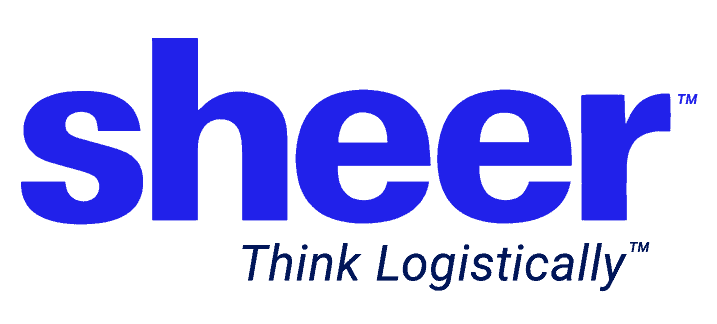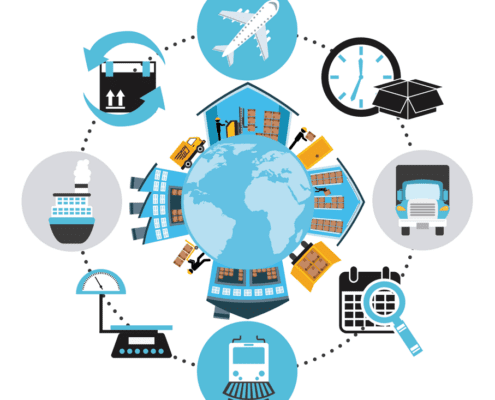
Importance of Freight Optimization for Shippers
In the past, transportation costs were often viewed as simply “the cost of doing business.” However, as the cost of transportation has increased, and logistics has emerged as a strategic advantage (or disadvantage when managed poorly), transportation has moved “from the back room to the Board room” in importance. Freight optimization is critical for shippers because it touches nearly every aspect of the supply chain and can also significantly impact the bottom line.
Cost Reduction
Freight optimization drives cost savings by optimizing routes (shorter routes require less fuel and reduce wear and tear on carrier’s equipment), transportation mode (selecting the most cost-effective mode for the shipment), and carrier selection (selecting the carrier with the optimal balance of price and service).
Improve Delivery Times
Freight optimization does more than simply reduce shipping costs; it can also improve delivery times by ensuring that the best mode, route and carrier have been selected in order to meet customer expectations.
Increase Profitability
As noted above, freight optimization can significantly reduce costs, but there are other important ways that freight optimization can contribute to enhanced profitability. Improved delivery performance not only helps you meet customer expectations, potentially driving repeat business, but also helps ensure your products are available for end-consumers to purchase, driving repeat purchase and supporting brand loyalty. Another benefit of optimization is that it creates visibility to data, creating opportunities for data-driven insights for opportunities for greater efficiency and operational improvements.
Environmental Impact
Reducing miles and fuel consumption not only reduces costs, but it can also help you reduce your greenhouse gas (GHG) emissions. Scope 3 transportation-related CO2e emissions are some of the hardest to measure, so reducing them at their source is a great strategy for achieving your company’s overall sustainability and carbon reduction goals.
How Do You Optimize Freight?
Now that we’ve explored some of the advantages of freight optimization, let’s dive into the details of a few specific optimization strategies.
1. Contract Negotiations
The freight optimization process begins long before your shipment hits the road. Logistics Service Providers (LSP) can negotiate favorable shipping rates on your behalf, helping you save time, reduce costs, and ensure the desired service levels are maintained.
- LSPs can leverage their aggregate shipment volumes to help obtain pricing discounts for your transportation needs.
- LSPs maintain long-term relationships with a curated network of high-performing carriers. This too can drive more favorable contract terms, better communication and enhanced service.
2. Route Optimization
On the surface, route optimization seems like a simple matter of choosing the fastest route from point A to point B. In practice, it is a far more nuanced exercise that involves a multitude of considerations and tools. Whether you primarily ship via full truckload, LTL, intermodal, or employ a multimodal transportation network, your supply chain management strategy can benefit from route optimization solutions.
- Successful route optimization begins with data collection. Historical data on delivery times and costs, along with detailed route, distance, traffic, road condition, and delivery schedule data are essential for optimizing routes.
- Routing software is key to making sense of the data. Routing software tools can turn your data into insights and calculate optimal routes.
- Route optimization is a dynamic, not static, endeavor. Collecting real-time data on constantly-changing weather conditions, traffic patterns, and other variables can help you fine tune your plan in real-time.
- Optimizing multi-stop routes is essential for minimizing travel distances and fuel consumption while ensuring delivery windows are met.
- Integrating route planning software with the TMS and visibility platforms is key to creating a cohesive logistics technology ecosystem.
3. Mode Optimization
Mode optimization ensures the right vehicle is utilized for every shipment. This includes matching the shipment to the vehicle based on shipment size, vehicle capacity, as well as fuel efficiency.
- Understanding each shipment’s unique requirements, such as delivery deadlines, cargo type, dimensions and weight, is essential to determining the optimal mode of transportation.
- In addition to comparing the direct costs of each mode of transportation, be sure to consider the potential indirect costs including handling, storage, accessorial fees and the impact of potential shipment delays.
- Consolidation: Consolidating multiple less-than-truckload shipments in to a full truckload, or multiple less-than-container-loads into a full container is a common and effective way to reduce freight transportation costs.
- Assess the urgency of the shipment to determine the optimal mode. Simply put, if the delivery is not urgent, you can utilize a slower, less costly mode, such as rail or LTL, rather than a faster, higher-cost solution such as air cargo.
4. Freight Auditing
Once you have implemented the processes above, your optimization journey is not complete. Fright auditing, the systematic review and validation of fright bills and invoices to ensure accuracy, can present additional opportunities for cost savings. A 4PL partner can provide this service, offering benefits beyond cost savings including:
- Efficiency Gains: Manually auditing freight invoices is time-consuming and mistakes are common. Sophisticated LSPs leverage automated freight auditing software to quickly process invoices and spot errors. Automation also allows for scalability, compounding your efficiency gains as your business grows.
- Stronger Vendor and Carrier Relationships: Avoid late payment penalties and strengthen your vendor and carrier relationships when payments are made accurately and on time.
- Compliance and Dispute Resolution: Freight audit and payment services ensure carriers honor agreed-upon freight rates, terms and conditions. Should disputes arrive, LSPs can act as an intermediary on your behalf, saving your internal teams time and hassle.
Tools for Freight Optimization
Today’s shippers have a wealth of technologies they can utilize to optimize their freight. In many instances, your LSP can provide these tools and/or wield them on your behalf.
Transportation Management System (TMS)
A TMS is critical for any shipper that wants to take control of the planning, execution and optimization of their transportation operation. While many shippers implement and operate the TMS in-house, there are many advantages to partnering with a 4PL for implementation. 4PLs that offer robust integration software can help you get your TMS up and running in weeks, not months, while also ensuring your TMS is connected with your ERP, Real-Time Transportation Visibility Platforms (RTTVP), other critical systems and external supply chain partners.
Real-Time Transportation Visibility Platforms
Platforms such as Macropoint, project 44, Fourkites and others provide shippers with real-time tracking of shipments, allowing you to monitor shipment status, anticipate delays or disruptions that may imperil your shipments from being delivered on-time, and enhancing decision-making.
Route Optimization Software
As noted above, route optimization software is critical to freight management and optimization. Many TMS platforms, including MercuryGate, Oracle Transportation Management and JDA Transportation Management have built-in route optimization functionality. Route optimization software is also available as a standalone software tool.
Freight Audit and Payment Software
Similar to route optimization, many TMS offer built-in freight audit and payment software. There are also many standalone freight audit and payment software platforms, such as Cass Information Systems, Blume Global, , to name a few.
Benefits of Freight Optimization with Sheer
Are you ready to reap the benefits of freight optimization? Sheer Logistics provides shippers with benefits like enhanced control and visibility, cost reduction, and improved adaptability through our data-driven approach and technology integration. We offer 4PL/managed services partnerships that act as an extension of your team, focusing on efficient cost management and customer satisfaction. Our proactive strategy development and thorough assessment of current processes can help you optimize your supply chain, streamline processes, reduce errors, and save time and money. To get started, please contact us.








